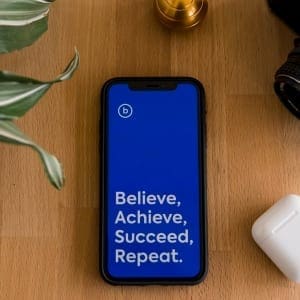The mobile learning groundswell doesn’t look like it will slow down and is more and more becoming the popular mode of studying in numerous industries.
 A recent survey by Brandon Hall Group shows that 73% of organisations are actually actively involved in eLearning in one way or another, and 87% planned to expand eLearning use throughout the following 12 months.
A recent survey by Brandon Hall Group shows that 73% of organisations are actually actively involved in eLearning in one way or another, and 87% planned to expand eLearning use throughout the following 12 months.
At the core of mobile learning’s popularity is our love of technology – it’s untethered and can be done anytime and anywhere. Most people are already utilizing their very own devices to research information (or to complete casual studying).
PewResearch have discovered that 86% of smartphone house owners (or around 62% of the entire adult population) have used their phones in the previous 30 days to find ‘Just in Time’ information. 18-29-year-olds are much more likely to have used a mobile device for casual JIT research or casual learning of some kind.
It’s no surprise that most employees are warming to mobile learning – besides, who actually wants to spend extra time at their desk when training content could be absorbed on the bus, or while waiting for a train on the way home?
It might seem apparent that this new mode of consumption also requires a totally different approach to instructional design, graphic and user experience design, however, these approaches are often missed. often, mobile Learning fails to capitalise on the numerous benefit this method of training delivery has to offer.
Generally, mobile learning is used as an alternative for different options, and never as an approach to complement or reinforce learning. Formal and casual or ‘on-demand’ learning can be blended to contextualise concepts and provide higher retention of learning concepts. When executed well, eLearning should be less about comprehension and retention, and more about convenient access to learning when it’s needed (or when it will have the most impact).
For instance, a brand new office initiative is likely to be delivered throughout working hours by way of mobile learning or conventional strategies to clarify advanced procedures or insurance policies. Mobile learning might then be used as an approach to assist employees to retain what they’ve realized, partaking them in additional studying with chew sized modules, or refresher quizzes to check information. Use of ‘micro-learning’ modules can be used to spice up worker efficiency at common intervals and may help HR groups attain the complete organisation in spades.
To unlock all of the advantages of mobile learning, performance support groups and learning designers need to have the ability to successfully transition learning objectives and content material to match the context of the delivery methods that are available.
One of the easiest ways to do this is to use a rapid authoring tool to quickly create mobile-friendly courses and share them to staff via email, or comms tool, without involving an IT department or Learning management system. With this in mind, here are…
10 Practical tips you can use to boost the effectiveness of your mobile learning:
- Establish the need for mobile learning and outline what you want to achieve and why you think it’s a good idea before you get started – your organisation has to be on board if you want your programs to be successful.
- Start by migrating legacy courses – converting content is much easier than designing a new program from scratch. It will also help provide a baseline for any future development.
- Ensure that all of your training content is relevant, engaging and accessible on the devices it will be used on. Don’t try and shoehorn all of your content on a topic into one course.
- People have short attention spans when using smaller screens so chunk your training content into 3-10 minutes micro-lessons.
- Use interactive elements interspersed with other content to make mobile learning content engaging.
- Keep any videos short – 2-3 minutes max!
- Implement a consistent format and design approach that learners can become familiar with – you don’t want your employees second-guessing what they are doing every time they open up a new learning module.
- Use device-agnostic technology to support BYOD, flexibility and choice of device to access learning – i.e. don’t use Flash or any sort of technology that requires an installable player to view mobile content.
- Create solutions that are designed in a way where learners don’t feel like they have sat through what they know as eLearning – if you feel yourself switching off when you’re developing the content it’s likely your employees will do the same.
- If possible, use gamification elements like timers, badges or points to make your training feel more at home on mobile. If you don’t have the resources to add these sort of elements to your mobile learning – do whatever you can to make it fun. Use humour and feedback as a way to engage people in what they are learning.
Want to take a look at our learning solutions?
Contact our team to discuss how we could help with learning in your organization.





























